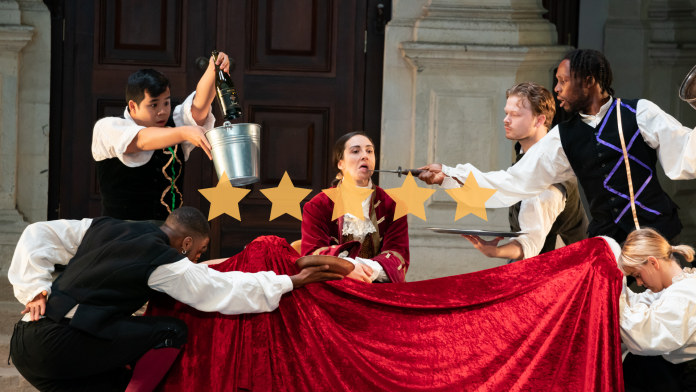★★★★★
Set inside the beautiful gothic charms of Islington’s Union Chapel, Frederick Waxman’s Figure present a “historically informed” but wholly present rendering of requiems by Gabriel Faure and Marc-Antoine Charpentier, alongside readings from Radio 3’s sonorous Donald Macleod. A wide-ranging and impactful evening, this is the collision of classical music and poetry at its best.
The evening essentially functions like a secular church service, with Macleod’s selections of poetry and prose, all centering around death, acting as the traditional readings. Like the music they accompany, the readings fluctuate around the positive notions of life after death (as in the extract from Bhagavad Gita) to the intensely realistic and melancholy (in writings by Phillip Larkin and Alice Oswald). They are the perfect counterpart to the music, intellectually stimulating without being overwhelming, and as a secular alternative to the still-Christianity-dominated memorials surrounding Remembrance Day offer much to consider.
Waxman’s renderings of the requiems themselves offer even more, both on a musical and historical level. One of the intentions of Figure is to present the works in their traditional context, meaning that both requiems are presented in slightly different pitches/with different instruments than their usual renderings. Although someone such as myself who had never heard either piece before would not be able to tell the difference, it offers an added dimension for music lovers. Charpentier’s Messe pour les trespasses and Prose des mortes offer elegance in the setting of the Kyrie, as well as darker, more foreboding death in the use of Dies Irae. As across the piece, Waxman makes strong use of a small but dynamic orchestra, as well as an incessantly talented choir, with particular standout performances from the bass section (Hugo Herman-Wilson, Tristan Hambleton) and sopranos (Ana Beard Fernandez, Claire Ward).
Faure’s Requiem is even deeper and more developed in sound, offering in addition to the existing band a powerful orchestra and two soloists, Rowan Pierce and Ashley Riches, whose depth of voice add a mystery and gravitas to the work. Here the dramatics of the show also take flight: Pierce sings from the balcony and Riches from the pulpit, whilst a glorious solo viola player also sings from on high. Faure’s piece is the most successful of the evening, fully pulling together the tender sweetness, dark foreboding and glory of the music, whilst providing the greatest visual stimulation.
An unusual Saturday night but an undeniably glorious one: Figure’s aims of producing historically-informed and wholly-accessible classical music are achieved, whilst interlaced with thought-provoking writing. It is a secular act of worship for the arts, and one I would long to see repeated.
Words by Issy Flower
Support The Indiependent
We’re trying to raise £200 a month to help cover our operational costs. This includes our ‘Writer of the Month’ awards, where we recognise the amazing work produced by our contributor team. If you’ve enjoyed reading our site, we’d really appreciate it if you could donate to The Indiependent. Whether you can give £1 or £10, you’d be making a huge difference to our small team.
